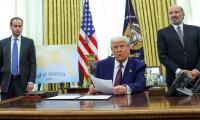On the occasion of completing one month of taking charge as chairperson of the prime minister’s taskforce on Gandhara Tourism with the status of minister of state – on Wednesday (June 21), I decided to lead a delegation – comprising the Kenyan high commissioner, researchers, students and journalists – to the 2,500–year-old Manikyala Stupa, located near Rawat, an area adjacent to the federal capital Islamabad.
My recent visit was in connection with a series of weekly visits to promote Gandhara tourism. I was joined by various diplomats, members of civil society, students and media representatives. I believe that for the sake of promoting a positive image of Pakistan in the eyes of the international community and the stability of our national economy, religious tourism – especially the regular arrival of Buddhist tourists from friendly countries such as Nepal, China, Korea, Myanmar, Thailand, Sri Lanka, Cambodia, Indonesia and Malaysia – is essential.
It is for this reason that last month when I was entrusted to head the prime minister’s taskforce, I announced a series of weekly visits to the Gandhara civilization archaeological sites every Wednesday. In Hinduism, Wednesday (also known as ‘Budhvar’) has special spiritual significance. The day attributed to Lord Krishna is the day of wisdom, knowledge, information and to learn something new.
To start the weekly archaeological visits of the Gandhara period, I chose the mysterious caves of Buddha surrounded by thousands of years old trees in Shah Allah Ditta town, Islamabad. Before Partition, there was a garden of the Hindu Sadhu, which is now a target of the encroachment mafia. In these sacred caves, countless monks, sadhus, saints and pious persons spent their entire lives to show people the right path. It is the place where Shiv Ji stayed on his way to Katas Raj. Similarly, Ramchandra also spent time in the caves during his 14 years of ‘banvas’.
In the second phase of the weekly pilgrimage, the Takht-e-Bahi Buddhist ruins located in Mardan, Khyber Pakhtunkhwa were explored. During the Gandhara era, it was a prominent university where students from China, Japan, Korea and other countries came to study.
In the third stage to gain awareness of Gandhara sites, a two-day visit to the beautiful valley of Swat, which is also known as the birthplace of Buddhism, was arranged. It is said that Prince Siddhartha, who was born into the royal family of Nepal, came here to seek the true purpose of life. It is the wish of every Buddha in the world to make a pilgrimage to the holy statue on the mountain rock, recognized as the Buddha of Swat. Similarly, the Ram Takht, a sacred site where Ram Chandra spent some of his time in banvas, is also located in the mountains of Swat.
Continuing the weekly tours, the 2,000-year-old mysterious Manikyala Stupa was selected this time, which is a few kilometres far from Rawat on the way to Lahore from Islamabad via GT Road. Buddhists believe that this stupa, located in the village of Tope Manikyala, was built to honour the spot where Prince Sattva, an earlier incarnation of the Buddha, sacrificed himself to feed a hungry lioness and seven cubs.
According to historians, this magnificent stupa was built for the first time in the Kanishka period between 128 and 151 CE. However, this stupa is also considered one of the 84,000 stupas built by Ashoka the Great, the patron king of Buddhism in the region. Historically, during the reign of Maharaja Ranjit Singh, an Italian general discovered gold and silver ornaments and precious ancient coins from here.
I think the holy places of the Gandhara civilization can only be functional if Buddhist monks and devotees from all over the world start visiting here regularly. I am glad that finally my efforts have started bearing fruit and serious steps have been taken at the government level to promote religious tourism.
The writer is a member of the National Assembly and patron-in-chief of the Pakistan Hindu Council.
He tweets @RVankwani
This demand has fueled rapid growth deposit base of Islamic Banks and Islamic Windows operated by conventional banks
But Punjab Agriculture Food and Drug Authority building near Thokar Niazbeg on Multan Road stands out
Macron has been particularly vocal in their criticism, asserting that withholding arms from Kyiv plays directly into...
As PPP governs province, Bilawal Bhutto Zardari holds strategic position to address both violence and its underlying...
Critics argue that strategy is vague, but closer look indicates strategic alignment with global trends and national...
To defeat it, we must distrust bot-driven narratives, to defeat it, we must verify sources before believing or sharing







